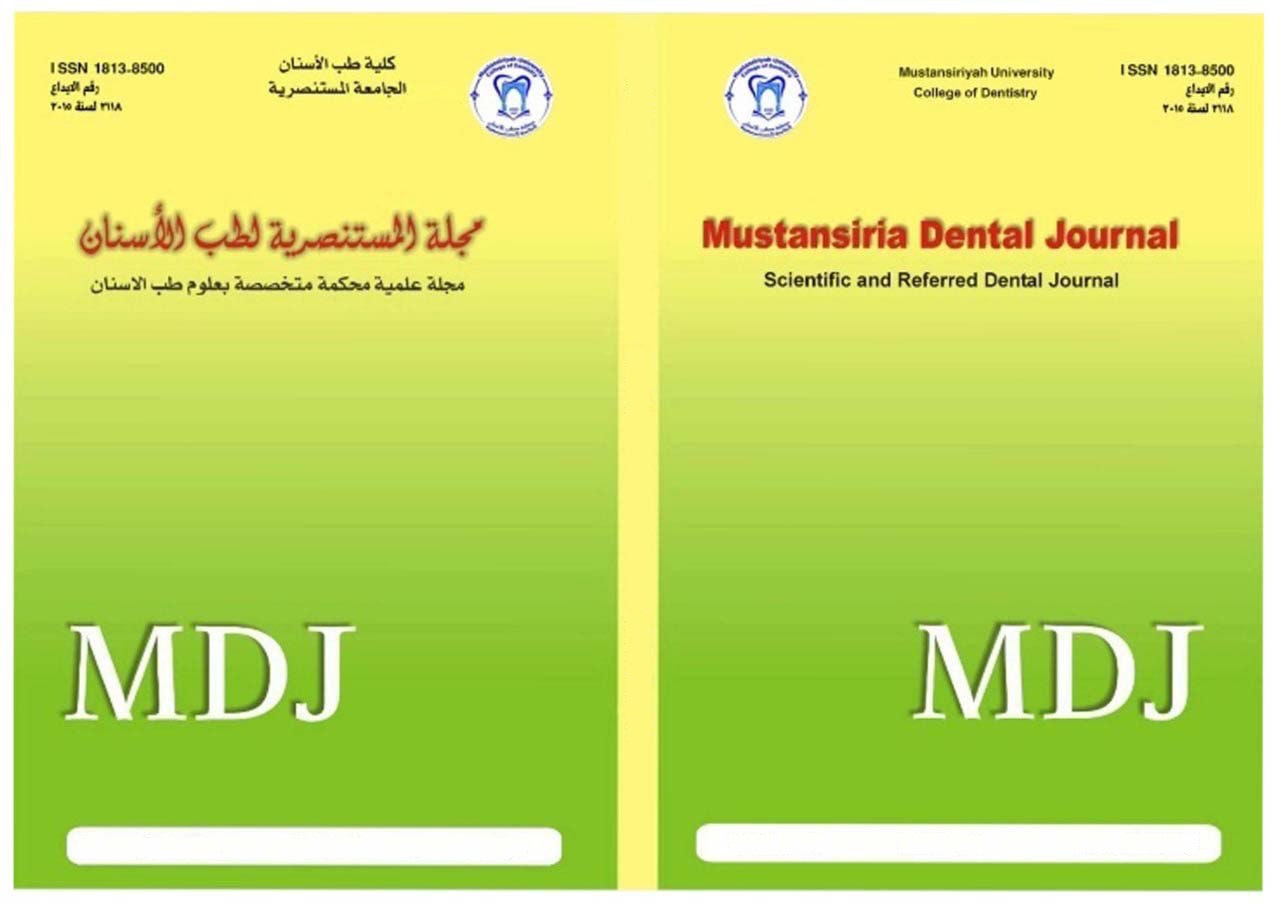Abstract
The bending stiffness of the post should have the ability to transfer and distribute forces and stresses in an endodontically treated tooth to prevent root fracture. The aim of this study was to evaluative the post materials on the fracture resistance of endodontically treated teeth restored with three types of post materials. Thirty
extracted human mandibular premolars after root canal preparation and obturation with gutta percha; the roots were divided into three groups according to the type of
post material, group Fc restored with fiber post, group Sc restored with stainless steel
post and group Tc restored with titanium post. All teeth restored with composite
restorative material as core materials. Then all the teeth were subjected to
compressive load at 130o angle from the horizontal plan at a 5mm/min crosshead
speed until fracture. Results showed that there was a significant different between
groups in term of fracture loads (P= 0.0301). Also the fracture loads of teeth restored
with titanium post has highest mean fracture load (830N), whereas teeth restored with
Fiber post demonstrated the lowest mean fracture load (701.3N). This study
concluded that the teeth restored with metallic post were more fracture resistant than
those restored with fiber posts. But the combination of a fiber post and composite core has the favorable mode of fracture that considered reparable, while considered unfavorable when restored with metallic post.
extracted human mandibular premolars after root canal preparation and obturation with gutta percha; the roots were divided into three groups according to the type of
post material, group Fc restored with fiber post, group Sc restored with stainless steel
post and group Tc restored with titanium post. All teeth restored with composite
restorative material as core materials. Then all the teeth were subjected to
compressive load at 130o angle from the horizontal plan at a 5mm/min crosshead
speed until fracture. Results showed that there was a significant different between
groups in term of fracture loads (P= 0.0301). Also the fracture loads of teeth restored
with titanium post has highest mean fracture load (830N), whereas teeth restored with
Fiber post demonstrated the lowest mean fracture load (701.3N). This study
concluded that the teeth restored with metallic post were more fracture resistant than
those restored with fiber posts. But the combination of a fiber post and composite core has the favorable mode of fracture that considered reparable, while considered unfavorable when restored with metallic post.
Keywords
fracture resistance
Modulus of elasticity
post
